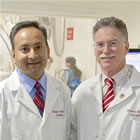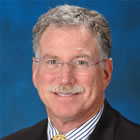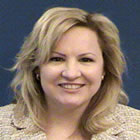|
Transradial Wrist Angioplasty
Training Coast-to-Coast in January 2011
"Radial First" Session
in California and SCAI Transradial Program (TRIP) in Philadelphia
Start Off
the New Year with Increased Training Opportunities for Cardiologists
|
 |

Course Co-Directors:
Dr.
Morton J. Kern and
Dr. Pranav Patel of
University of California,
Irvine |
|
December
12, 2010 -- Starting the New Year off are coast-to-coast
training opportunities for interventional cardiologists who
are interested in learning about the transradial approach
to heart catheterization, angioplasty and stenting.
Dr. Morton
Kern and Dr. Pranav Patel of the University of California,
Irvine School of Medicine, are offering their "Radial
First" Training Program on January 8, and the Society for
Cardiovascular Angiography and Interventions (SCAI) has
scheduled
a follow up course to their oversubscribed Boston Summit.
SCAI's new course is called the SCAI
Transradial Intervention Program
(TRIP) and it will be held on January 15 in
Philadelphia. |
Popular
in Europe and Asia, the transradial (or wrist) approach to
percutaneous catheter-based diagnostic and interventional procedures
has been
spreading only recently in the U.S. A
2008 study, published
in the Journal of the American College of Cardiology: Cardiac
Interventions,
reported that during the period from 2004-2007, only 1-2% of all
procedures were done from the wrist in the United States. According
to Gary Clifton of Terumo Interventional Systems in a recent interview
on CRTOnline.org,
the use of transradial today may be closer to 7% -- and, as evidenced
by the growth in training opportunities, this number is growing.
An interesting insight into this data is
that cardiologists who have adopted the wrist technique tend to
use it as their default access, and they do more than half of
their procedures this way -- many use it as much as 90% of the
time.
University of California, Irvine's course co-director,
Dr. Morton Kern, explained
to
Angioplasty.Org why his course and, in fact, UCI's entire program
is called "Radial First".
"This is called 'Radial
First' because it should be the first approach
for cardiac cath. This is the first West Coast training program
that I'm
aware of and it's to promote the use of radial artery access
for cardiac cath because of the reduced complication rates
associated with radial access, especially in PCI patients and
those heavily anticoagulated. The traditional method of femoral
access is good, but it has its downsides. Certain bleeding
complications are potentially fatal but there are also problems
with vascular access closure devices
and a well-known group of patients that can't tolerate femoral
access very well: the obese, those with back trouble, those
with tortuous vessels, peripheral vascular disease and the
list goes on. So the purpose is really quite simple: to
promote a better method.... "Radial First" is the
way to go, because if you use it infrequently, you don't have
the skill set to make it effective, efficient and safe as it
would be if you practiced it all the time."
|
|

Morton J
Kern, MD
UC Irvine |
A description of the January 8 UC Irvine
half-day offering can be found here,
but space is very limited and Dr. Kern urges anyone interested
in learning this technique to contact the course coordinator,
Lesley Anderson, at (714) 456-5427.
The SCAI-sponsored TRIP course being held
on January 15 in Philadelphia is a full-day course and has recently
added a special section devoted exclusively to nurses & technologists
-- who work with the interventional cardiologists in the cath lab.
The course agenda and registration information can be found on SCAI's
TRIP web
site.
The TRIP course is being led by Program Co-chairs
Kimberly Skelding, M.D., FSCAI and Samir
B. Pancholy, M.D., FSCAI,
and a faculty of
the most
highly trained and well respected experts in this field. The schedule
lists a dynamic mix of didactic lectures,
case
reviews and simulation
training. In addition to the co-chairs, the faculty for the course
reads like a who's who of transradialists in the U.S., many of whom
have been interviewed in Angioplasty.Org's
Transradial Center: Ron Caputo, M.D., FSCAI,
John Coppola, M.D.,
FSCAI,
Ian Gilchrist, M.D., FSCAI,
David Kandzari, M.D., Ph.D., FSCAI,
Mitchell Krukoff, M.D.,
Tak Kwan, M.D., FSCAI,
Tift Mann, M.D.,
Tejas Patel, M.D.,
Christopher Pyne, M.D., FSCAI
,
Sunil Rao, M.D., FSCAI,
Pinak (Binny ) Shah, M.D., FSCAI
and Jennifer Tremmel, M.D.,
FSCAI.

Kimberly
Skelding, MD
Geisinger Medical Center |
|
Dr. Kimberly Skelding of Geisinger
Medical Center in Danville, Pennsylvania is not only course
co-chair but also Chair of SCAI's Transradial Working Group.
The group's first SCAI Radial Summit in Boston was a great
success, so popular that many cardiologists had to be
turned away -- sparking the organizing of this Philadelphia
course. Another SCAI radial course is being planned for San
Francisco in the spring. Dr. Skelding told Angioplasty.Org:
"I am thrilled that the transradial approach is being embraced
by the interventional community at this point. It has not
been systematically accepted and it is an important approach
to decrease complications in our patient
population, especially
for the elderly population, women and ACS/STEMI groups which
have
the
highest bleeding risk." |
About The Radial Access Center on Angioplasty.Org
To assist in educating the professional and patient population in the U.S. about
the this technique, Angioplasty.Org created the "Radial
Access Center for Transradial Approach" in 2007, a special
section devoted to information and news about the transradial technique, for
both patients and physicians. The Radial Center features interviews with leading
practitioners of the radial technique, such as Drs. Jeffrey Popma, Sunil Rao,
John Coppola, Shigeru Saito, Jennifer Tremmel and Howard Cohen. The section
also maintains a
listing of upcoming training courses in the transradial approach.
For patients there is also a "Hospital
Locator" that lists U.S. centers practicing
radial angiography. As Dr. Howard Cohen of Lenox Hill Hospital
in New York says of the wrist technique, "Patients really
prefer it. 95% of people who've had it both ways would say
'I'm coming back to you, Dr. Cohen because I like this transradial
a lot better than the other way!'
Reported by Burt Cohen, December 12, 2010
|



